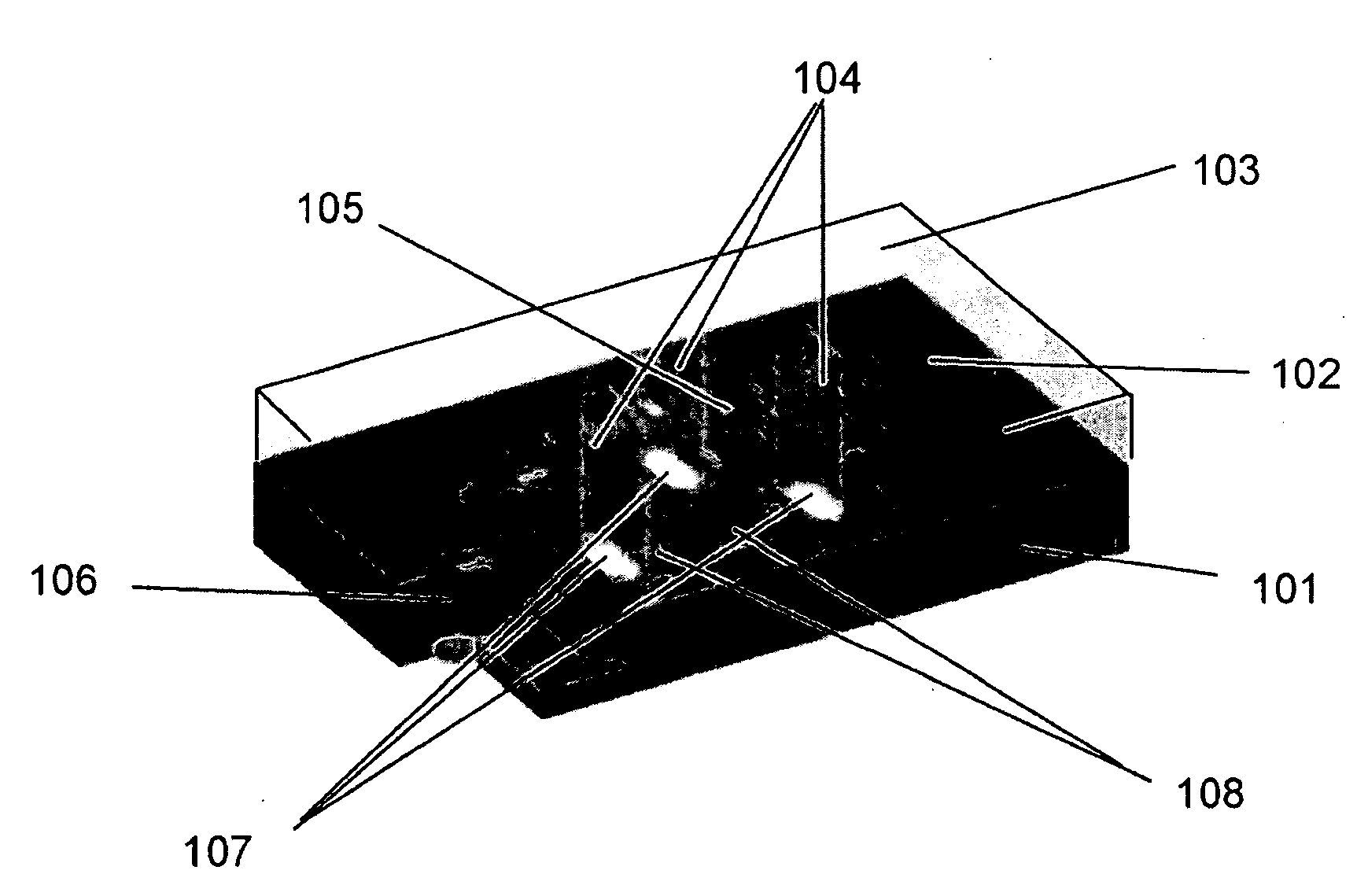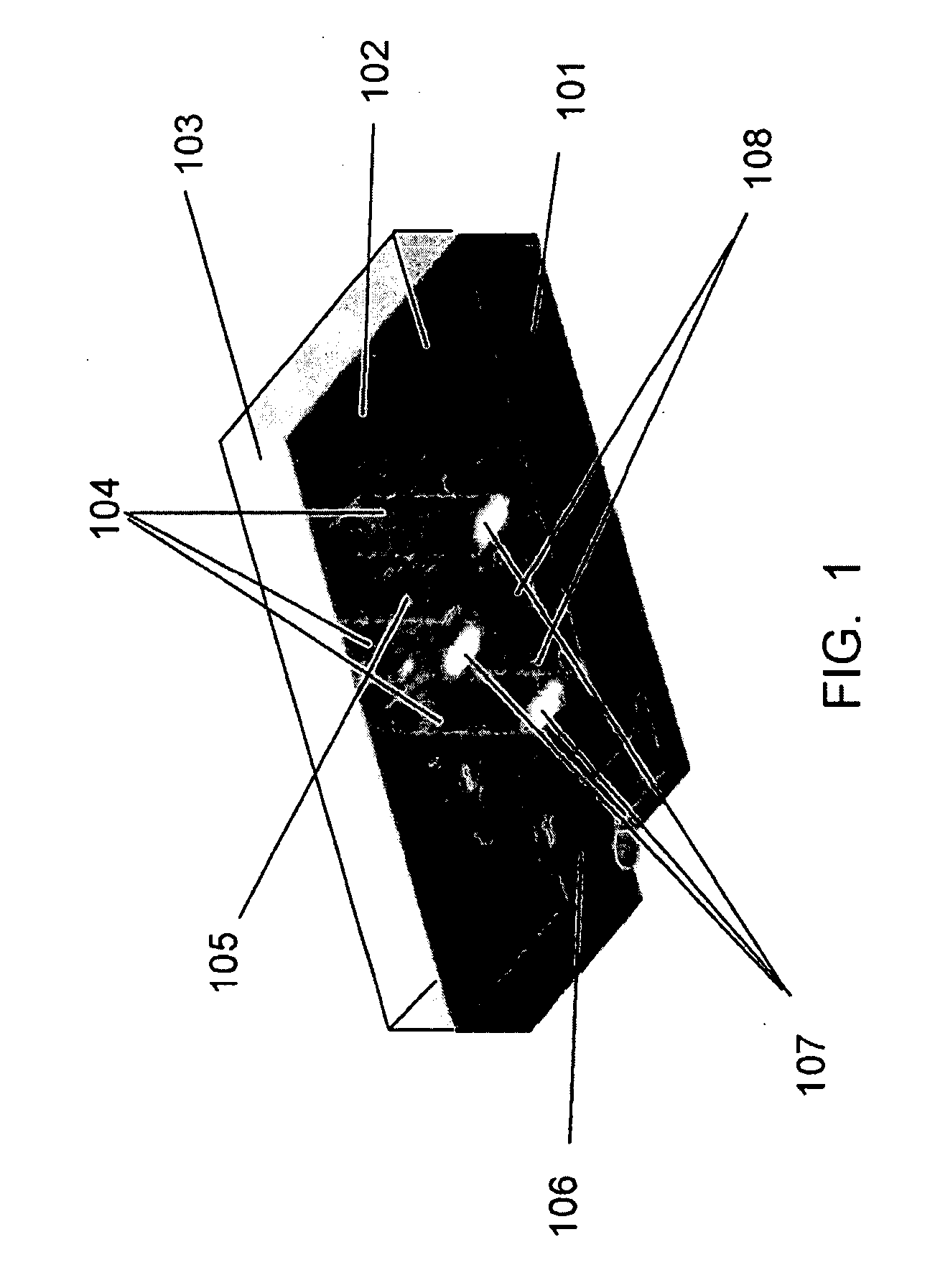Sequencing of nucleic acids
a nucleic acid and sequence technology, applied in the field of nucleic acid sequence analysis, can solve the problems of high cost of robotics and sample handling/storage, limited number of samples that can be analyzed in 1d array, and high cost of sequencing, so as to increase the throughput of the conventional sanger sequencing method thousands, simple and fast operation, and high throughput. the effect of high throughpu
- Summary
- Abstract
- Description
- Claims
- Application Information
AI Technical Summary
Benefits of technology
Problems solved by technology
Method used
Image
Examples
example 1
Elution of Sequences in Capillary Bundle
[0116]A sequencing CE module was made from drawn glass to form a hollow channel bundle HOW MANY IN THE BUNDLE with 100 μm capillary inner diameter which had dimensions of 2×3 mm2 at the channel cross section and was 5 cm in length. The sequencing channels were filled with 10% PAGE gel by capillary effect and the sample (described below) was loaded by applying the solution to half of the area of the bottom surface (which is perpendicular to the channels). A sample containing four fluorescence dye-labeled oligos of different lengths was used. The four oligos were FAM-18mer, Cy3-6mer, Cy3-38mer and FAM-46mer. The sequencing CE module was then placed in a horizontal electrophoresis apparatus for specified time (minutes), taken out to acquire images at the exit surface using an epifluorescence microscope (Olympus BX41 EPI fluorescence research microscope), and was placed back to the electrophoresis apparatus to continue the run. This process was re...
PUM
| Property | Measurement | Unit |
|---|---|---|
| time | aaaaa | aaaaa |
| time | aaaaa | aaaaa |
| emission wavelength | aaaaa | aaaaa |
Abstract
Description
Claims
Application Information
 Login to View More
Login to View More - R&D
- Intellectual Property
- Life Sciences
- Materials
- Tech Scout
- Unparalleled Data Quality
- Higher Quality Content
- 60% Fewer Hallucinations
Browse by: Latest US Patents, China's latest patents, Technical Efficacy Thesaurus, Application Domain, Technology Topic, Popular Technical Reports.
© 2025 PatSnap. All rights reserved.Legal|Privacy policy|Modern Slavery Act Transparency Statement|Sitemap|About US| Contact US: help@patsnap.com



